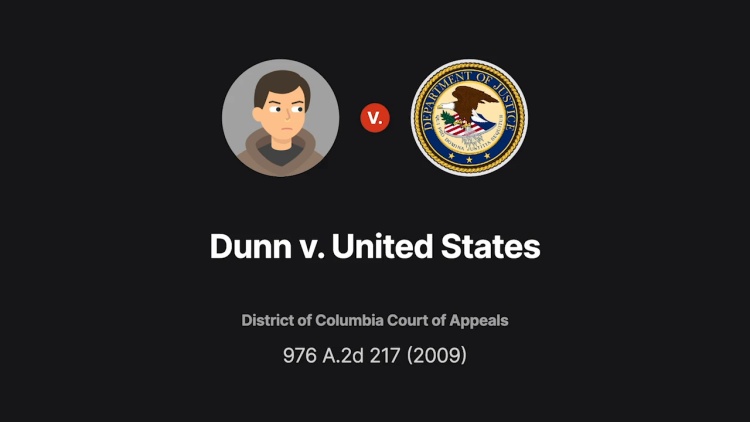Dunn v. United States
District of Columbia Court of Appeals
976 A.2d 217 (2009)

- Written by Carolyn Strutton, JD
Facts
Matthew Dunn (defendant) was part of a group that was protesting against animal cruelty outside of a pharmaceutical company’s building. The group was loudly chanting and yelling close to the building’s entrance. The building’s security team was standing between the protestors and the building, blocking the protestors from entering the building. The building’s security director, Mattison Agneu, was attempting to prevent a confrontation between part of his security team and the protestors when Dunn shoved the sign he was carrying into Agneu’s chest. The shove caused Agneu to step backward, and Agneu said “what in the hell are you —do you think you’re doing?” to Dunn. The protest eventually moved off to another location. After the protestors had left, an undercover police officer who had been observing the protest approached Agneu and told him that Dunn’s contact with Agneu amounted to an assault. Approximately one month later, the same group of protestors returned to the building, and the undercover police officer returned as well. The police officer asked Agneu if he could identify the protestor who had shoved him. Agneu identified Dunn in the group. Dunn was arrested and eventually convicted of assault for shoving Agneu. Dunn was sentenced to seven days’ imprisonment, which was suspended, six months’ probation, and $100 in fines. Dunn appealed, alleging that there was insufficient evidence to prove that he had shoved Agneu and that the assault was in any event de minimis and should not have been prosecuted.
Rule of Law
Issue
Holding and Reasoning (Oberly, J.)
What to do next…
Here's why 899,000 law students have relied on our case briefs:
- Written by law professors and practitioners, not other law students. 47,000 briefs, keyed to 994 casebooks. Top-notch customer support.
- The right amount of information, includes the facts, issues, rule of law, holding and reasoning, and any concurrences and dissents.
- Access in your classes, works on your mobile and tablet. Massive library of related video lessons and high quality multiple-choice questions.
- Easy to use, uniform format for every case brief. Written in plain English, not in legalese. Our briefs summarize and simplify; they don’t just repeat the court’s language.





